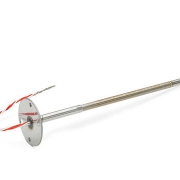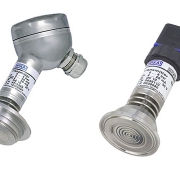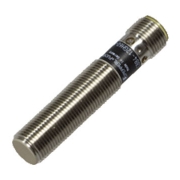Rosemount Thermocouple Temperature Sensor
Rosemount 185 Thermocouple Temperature Sensor
Meet the required standards of your process temperature measurements with the Rosemount 185 Thermocouple Temperature Sensor. Rosemount Thermocouple Temperature Sensor covers a range of temperatures and is engineered as type J, K or N thermocouples (IEC 584 Class 1) with or without a thermowell to meet a variety of application requirements. This flexible temperature measurement solution also offers many configurations, enclosure and connection head options, and remote or integral mounting designs.
The Rosemount DIN-Style Sensor and Thermowell have designs that provide flexible and reliable temperature measurements in process environments. Features include:
- Temperature range of –196 to 450 °C for RTD, –40 to 1000 °C for thermocouple
- Industry-standard sensor types, including RTD and thermocouple varieties
- DIN-style design for easy mounting and replacement
- Variety of enclosure and connection head options
- Global hazardous-location approvals available
- Calibration services available to give you insight to sensor performance
- MID calibration options for custody transfer
- Assemble to transmitter option
Specifications
Insulation Resistance
- 1,000 MΩ minimum insulation resistance when measured at 500 Vdc and at room temperature
Certifications/Approvals
- Hazardous location, see full specs for complete list of certifications
Lead Wires
- PTFE insulated, 0.52 mm2 (20 AWG) stranded thermocouple wire, color-coded per IEC 584
Features
- Sensor designed per IEC 584 to offer optimal performance
- Sensor selections cover a wide range of temperatures from -40 to 1832°F (-40 to 1000°C) to meet process demands
- Available in single element, dual element and isolated configurations with ungrounded junctions for adaptability
- DIN-style sensor connection heads allow for quick mounting and replacement
- Terminal block, flying leads and spring-loaded threaded adapters provide remote or integral mounting configuration
- Adaptable design with a variety of enclosure and connection head options meets varying application requirements
- Option for thermowell assembly delivers increased protection from corrosive environments
- Global hazardous location approvals meet local requirements
Technical Specification
Model
0065
- Pt 100 RTD (IEC 751) without thermowell
0185
- Thermocouple (IEC 584 Class 1) without thermowell
Connection head
- 2 1/2-in. NPT
- M20 1.5
Temperature range
- –50 to 450 °C (–58 to 842 °F)
- –196 to 300 °C (–321 to 572 °F)
- –40 to 750 °C (–40 to 1382 °F)
- –40 to 1000 °C (–40 to 1832 °F)
- –60 to 600 °C (–76 to 1112 °F)
- –40 to 1000 °C (–40 to 1832 °F)
Material
- 300 series stainless steel
What is Thermocouple
A thermocouple is comprised of at least two metals joined together to form two junctions. One is connected to the body whose temperature is to be measured; this is the hot or measuring junction. The other junction is connected to a body of known temperature; this is the cold or reference junction. Therefore the thermocouple measures unknown temperature of the body with reference to the known temperature of the other body.



